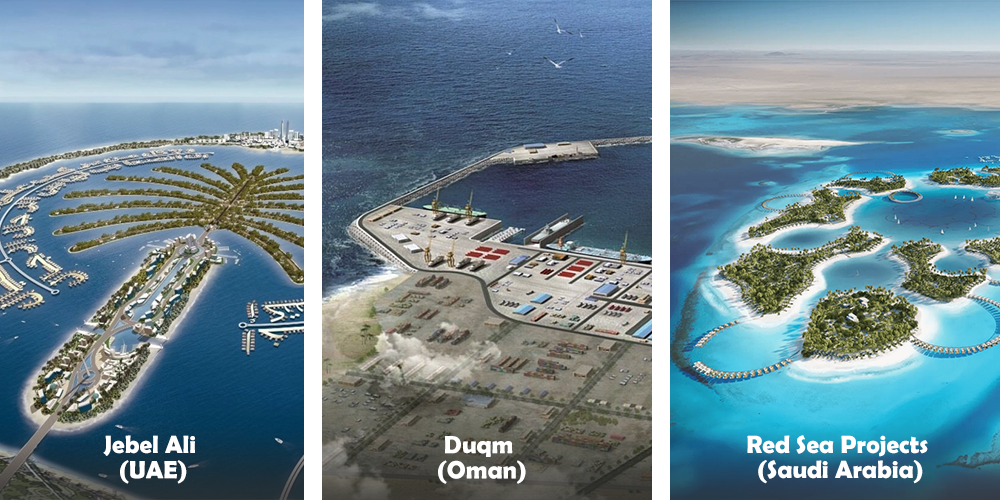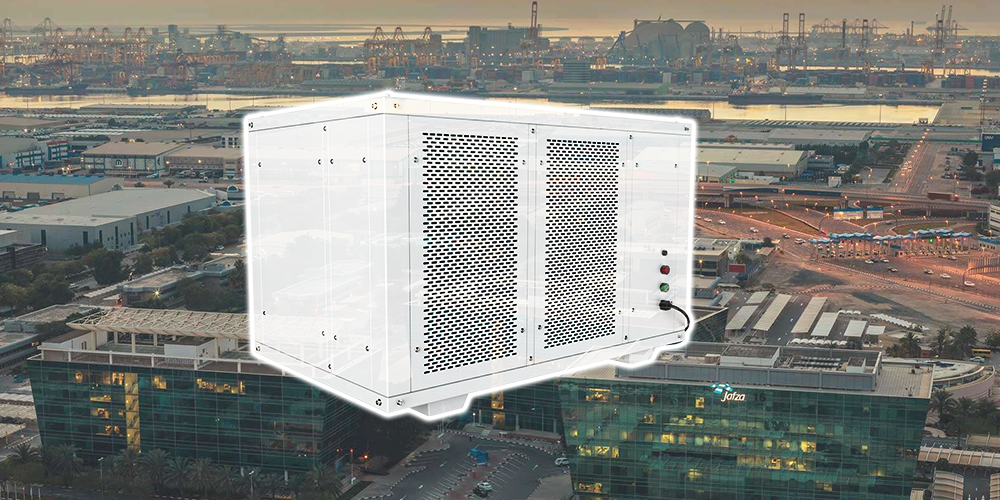Development Prospects of Coastal Warehousing in the ME
Strategic Importance and Drivers:
The Middle East's location between Europe, Asia, and Africa makes it a global trade nexus. Major ports like Jebel Ali (UAE), Hamad (Qatar), and Jeddah (Saudi Arabia) leverage this for transshipment and logistics.
Initiatives like UAE Vision 2021 and Saudi Vision 2030 emphasize reducing oil dependency, boosting sectors like tourism and e-commerce, which require robust warehousing.
Jebel Ali Free Zone (JAFZA) and others offer tax exemptions and foreign ownership, attracting multinationals to establish coastal logistics hubs.

Opportunities:
Belt and Road Initiative (BRI): Chinese investments enhance trade corridors, increasing demand for storage solutions.
E-Commerce Growth: Post-pandemic online retail surges require last-mile logistics support from coastal hubs.
Regional Integration: GCC collaborations improve cross-border logistics, fostering warehouse network expansion.
Challenges:
Environmental Factors: Extreme heat and sandstorms necessitate climate-controlled storage, increasing operational costs.
Geopolitical Risks: Tensions in the Strait of Hormuz and regional conflicts pose disruptions risks, necessitating contingency planning.
Regulatory Complexity: Varying customs procedures and labor laws (reliant on expatriate workers) require nuanced navigation.
Future Outlook:
Resilience Planning: Addressing climate change and geopolitical stability through diversified supply chains.
Technological Leadership: Pioneering AI and automation to maintain competitive edge in global logistics.
Importance of Dehumidifiers for Coastal Warehousing
Dehumidifiers are generally necessary for coastal warehousing in the Middle East.
1. Climate & Humidity:
Coastal Humidity: Despite the Middle East's arid reputation, coastal areas (e.g., Dubai, Doha) experience elevated humidity due to proximity to the sea, often exceeding 60-80%.
Temperature Swings: Nighttime cooling can cause condensation, leading to moisture buildup even if daytime humidity seems manageable.
2. Material Risks:
Corrosion: Salt-laden air accelerates metal corrosion. Industrial warehouse dehumidifiers reduce moisture, mitigating salt-related damage.
Mold/Mildew: Organic materials (textiles, paper) and goods like pharmaceuticals are prone to spoilage in humid conditions.
Electronics & Packaging: Moisture damages sensitive electronics and weakens packaging materials.
3. Warehouse Design:
Ventilation Challenges: Natural ventilation may introduce humid, salty air. Mechanical systems with dehumidification are more effective.
Insulation & Sealing: Poorly sealed structures exacerbate moisture ingress, necessitating active humidity control.

4. Dehumidifier Options:
Refrigerant Models: Efficient in high temperatures typical of the Middle East.
Energy Efficiency: Modern, energy-saving units can reduce operational costs. Zonal deployment (targeting high-risk areas) optimizes usage.
5. Alternatives & Complements:
Sealed Containers/Desiccants: Useful for small-scale protection but impractical for large warehouses.
HVAC Systems: Cooling can reduce humidity but may require supplemental dehumidifiers in extreme conditions.
6. Regulatory & Economic Factors:
Compliance: Industries like pharmaceuticals mandate strict humidity control, often requiring a dehumidifier for pharmaceutical industry.
Cost-Benefit: Preventing inventory loss (especially high-value goods) justifies dehumidifier costs. Insurance may also require humidity management.
Coastal warehouses in the Middle East benefit significantly from dehumidifiers to combat humidity-driven risks like corrosion, mold, and product degradation. Implementation should be tailored to the warehouse's needs, considering climate, stored goods, and infrastructure. A hybrid approach (dehumidifiers + HVAC + protective packaging) is often optimal for cost-effective protection.
SHARE ON SOCIAL MEDIA
Post time: Mar-28-2025
 +86-13376814803
+86-13376814803  robert@hzhongtai.com
robert@hzhongtai.com 

















